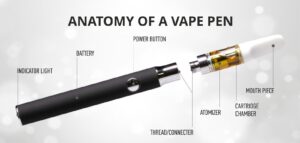Would you know how to respond in an emergency situation?
Some of us learned CPR in high school or for a babysitting class, but how many adults keep up with these skills? No one ever plans to be in an emergency situation, but quick thinking in a crisis can potentially mean the difference between life and death. Here are a few examples of emergency situations where recognizing the problem and knowing how to react could lead to rapid reversal.
BURNS—A first-degree burn makes the skin warm to the touch and pink. This is what a simple sunburn looks like. A second-degree burn creates blisters on the skin. If someone has been burned, immediately expose the area to cold water. This reverses the thermal injury and halts the progression of damage to the skin. A wet-to-dry dressing (moist bandage touching the skin and dry bandage outside of that) will do until proper medical attention can be sought.
ALLERGIC REACTION—Allergic responses range from sneezing to respiratory failure. Exposures to an allergen can trigger sneezing, runny nose, itchy eyes, rash (including but not limited to hives), itchy mouth, narrowing of the airway, facial swelling, and vomiting. The most severe kind of allergic reaction is called anaphylaxis. Insect stings, food ingestions, and medications are the leading culprits in anaphylactic reactions. An appropriately-dosed Epi-Pen (for under 60 lbs an Epi-Pen Jr, and for over 60 lbs a full-strength Epi-Pen) should help halt the progression of an anaphylactic attack. Immediate removal of the offending allergen, if possible, and delivery of Epinephrine should happen while emergency personnel are contacted.
POISONING—Finding a toddler chowing down on Tide pods, chewing fistfuls of Grandma’s blood pressure pills, or drinking Windex is harrowing. After removing the child from danger, call the Poison Control hotline at (800)222-1222. Try to have the name and dose of any ingested prescription medications available for that phone call. Do not try to induce vomiting; caustic substances will damage tissue for a second time on the way up the esophagus. For safety purposes, it is recommended that cleaning and laundry supplies be kept in a high-up cabinet that locks. Medications should certainly be kept out of reach of children and should be dispensed with child-safe lids.
OPIOID OVERDOSE—Signs of opioid or narcotic overdose (from medications like prescription pain killers) include pale and clammy skin, subdued respiratory drive, stupor, and sometimes vomiting. Narcotic medications are meant to dull pain, but too big a dose can be fatal. Street drugs can contain traces of Fentanyl, an extraordinarily addictive, powerful, and dangerous medication that can easily cause accidental overdose. A patient overdosed on narcotics may have very small pupils, itchy and pale skin, slurred speech, and a slack or droopy appearance. Narcan, a drug that reverses the effects of opioids, is now carried by most emergency workers, include police officers. Many schools stock it as well. It can be utilized as an injectable, but it is available as a one-dose nasal spray that anyone can deliver.
CARDIAC ARREST—In adults, heart attacks are often the result of years of untreated high cholesterol, obesity, poor diet, high blood pressure, or smoking, but in children this is not the case. Young people can suffer cardiac arrest if there is interruption of the normal electronic rhythm of the heart (due to electrocution, direct chest trauma, or medication overdose) or if there is underlying heart disease (Rheumatic valve damage, cardiomyopathy, infectious carditis). Damar Hamlin’s recent televised cardiac event after tackling a fellow NFL player raised awareness of heart attack risk in young people. Because he had access to an AED (Automatic Electronic Defibrillator) that could deliver a shock to his heart, his life was saved. Most sports arenas, schools, and gyms have EADs on site, and they come with instructions for the layperson to operate them correctly. For it to work, it’s vital that intervention happen in the first few minutes after a cardiac arrest, so knowing where to find the AED quickly is critical.
CHOKING—When food “goes down the wrong pipe”, it can get lodged in the airway and obstruct airflow. In the right setting (a restaurant or meal), a person who puts their hands up to the throat and starts sputtering should sound the alarm for a choking episode. Swift intervention is key, including performing the Heimlich maneuver, where the rescuer essentially hugs the patient from behind and delivers upward thrusts with grasped fists toward the diaphragm. Should the patient fall unconscious, gently lie them on their back and continue to provide an upward pushing motion just below the ribcage to encourage the offending morsel to be dislodged. There may be an instinct to reach inside the patient’s mouth to grab the item, but experts warn against a “blind sweep” of the mouth and throat, lest the item get unintentionally pushed down even further.
INJURY—High-speed collisions (car or bike or skiing accidents) can result in broken bones, concussions, internal organ damage, or lacerations that require repair. If there is even a question of head or neck injury, patients should not be moved until emergency care workers arrive. The risk of causing further damage (and possibly paralysis) from manipulating the spine is real, and should only be attempted if the patient can’t otherwise breathe.
SEIZURE—Whether a person has a known history of seizures or is having their first one, it can be scary to experience, even as an observer. Making sure the patient is safe from compounded injury (so, on the floor and away from sharp corners) is important. There are injectable medications that can stop a prolonged seizure, so finding out if the patient has that with them may help. The duration of seizure activity can drive the medical investigation, so if possible, try to note the time that a witnessed seizure starts and stops.
BLEEDING—Whether it’s an injury or a nosebleed, the best first step is to apply pressure to the site. In the case of an injury, there may be an open wound (cuts or scrapes) or a foreign body (nail or splinter). Applying a moist, clean towel to the area should help the blood clot without sticking to the cloth. For nosebleeds, have the patient sit down, lean forward (but not facing downward), and pinch the nose. Tissue that is rolled up and inserted into the nose can serve the same purpose. Ice or a cold pack will help to constrict blood vessels and slow bleeding as well.
In general, emergency medical situations warrant involvement from emergency medical personnel. If you encounter an unconscious, injured, choking, bleeding, or seizing individual, calling 911 is always a smart move. A quick-thinking and informed “good Samaritan”, however, can drastically change the outcome, and could even mean the difference between life and death.
From UH Pediatrician and PSI Medical Expert – Dr. Carly Wilbur.
Click here for more great insights from Dr. Wilbur.




